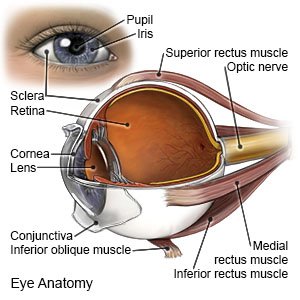Intraocular Lens Placement
Medically reviewed by Drugs.com. Last updated on Apr 6, 2025.
Intraocular lens (IOL) placement is a procedure to put a new lens in your eye. Your lens is a clear disc located on the front part of your eye. It directs light to the back of your eye. This procedure is used as treatment for cataracts.
 |
WHILE YOU ARE HERE:
Before your procedure:
- Informed consent is a legal document that explains the tests, treatments, or procedures that you may need. Informed consent means you understand what will be done and can make decisions about what you want. You give your permission when you sign the consent form. You can have someone sign this form for you if you are not able to sign it. You have the right to understand your medical care in words you know. Before you sign the consent form, understand the risks and benefits of what will be done. Make sure all your questions are answered.
- An IV is a small tube placed in your vein that is used to give you medicine or liquids.
- Local anesthesia eye drops will be placed in your eyes. You may also be given medicine to keep you relaxed and sleepy during the procedure.
During your procedure:
- Your healthcare provider will place drops in your eye. These drops may be used to numb your eye and help control pain. You may need antibiotic eye drops to help prevent a bacterial infection. You may be given medicine to keep you relaxed and sleepy during the procedure. You may instead by given general anesthesia to keep you asleep during the procedure.
- One or more small incisions will be made in your cornea. The cornea is the clear, round covering on the front part of your eye. If you are having a cataract procedure, your old lens will be removed. If you are having IOL placement for other eyesight problems, your old lens may be left in place. The new lens will be put in front or behind the iris (colored part of your eye). The incision may be closed with tiny stitches that dissolve, or left to heal on their own.
Drugs used to treat this and similar conditions
Combigan
Combigan (brimonidine and timolol) is used to treat glaucoma or ocular hypertension. Includes ...
Isopto Carpine
Isopto Carpine is used for glaucoma, glaucoma, narrow angle, glaucoma, open angle, intraocular ...
Omvoh
Omvoh is used to treat moderate to severe ulcerative colitis or Crohn's disease in adults. This ...
Pilocar
Pilocar is used for glaucoma, glaucoma, narrow angle, glaucoma, open angle, intraocular ...
Miostat
Miostat is used for glaucoma, intraocular hypertension, production of miosis
Isopto Carbachol
Isopto Carbachol is used for glaucoma, intraocular hypertension, production of miosis
Mitosol
Mitosol (mitomycin) is a solution applied to the surgical site using special sponges during ...
Echothiophate iodide ophthalmic
Echothiophate iodide ophthalmic is used for glaucoma
After your procedure:
You will be taken to a recovery room to rest. You may have an eye patch over your eye for protection from injury and infection. Healthcare providers will watch you closely for any problems. Do not get out of bed until your healthcare provider says it is okay. When healthcare providers see that you are okay, you may be able to go home. Medicines may be given to treat pain or swelling, or to prevent an infection.
RISKS:
You may need new glasses to see up close or have trouble seeing at night. Your lens may get damaged or slip out of place. You may see halos or streaks when you look at lights at night. New cataracts may form. You may develop an infection or glaucoma (increased eye pressure). Your cornea or other parts of your eye may be damaged. You may have problems moving your eyes or opening and closing your eyelids. Your retina may break away from the back of your eye. You may have bleeding inside your eye.
CARE AGREEMENT:
You have the right to help plan your care. Learn about your health condition and how it may be treated. Discuss treatment options with your healthcare providers to decide what care you want to receive. You always have the right to refuse treatment.© Copyright Merative 2025 Information is for End User's use only and may not be sold, redistributed or otherwise used for commercial purposes.
The above information is an educational aid only. It is not intended as medical advice for individual conditions or treatments. Talk to your doctor, nurse or pharmacist before following any medical regimen to see if it is safe and effective for you.
Further information
Always consult your healthcare provider to ensure the information displayed on this page applies to your personal circumstances.
